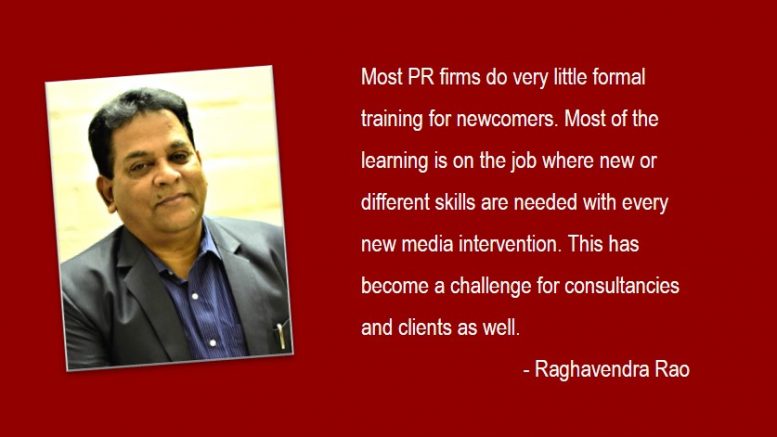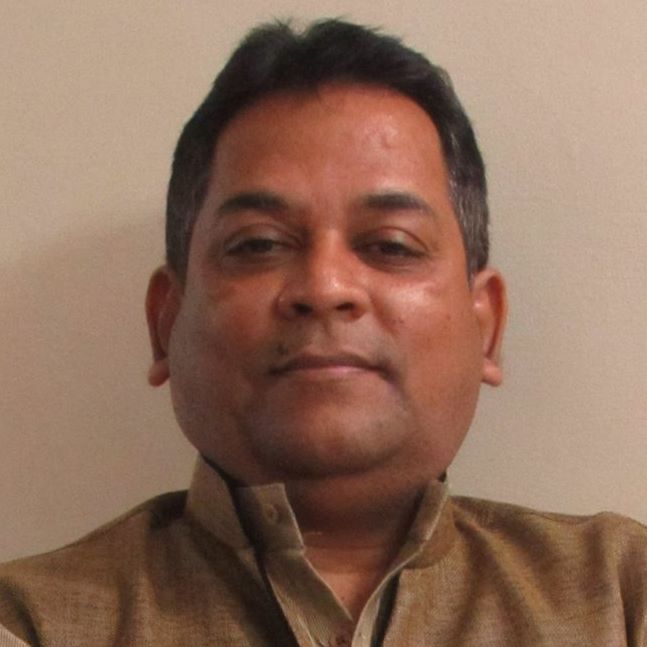The evolution of PR as a business in India started in 1980’s however it evolved as a business model in 1990 when globalisation arrived in India in all spheres of every industry. Till such time many advertising agencies had their own extended arm which would handle the PR services of their existing portfolios. With the scope of work expanding and mandates growing bigger depending on size of the client, India saw birth of many PR consultancies and a select international PR firms too started setting up shop in India, some directly and few in association with Indian counterparts.
This was also a period when India saw the rise of print media and the employee traffic was very high, especially in the marketing wings of various companies. 90’s also saw a rise in TV media in India and there was plenty of movement from print to TV media both in terms of editorial shifts and also marketing talent. Few marketers grew bigger and bigger and the less glamour driven one’s moved to PR firms. While many of them also moved to corporate world in their MARCOM wings. Incidentally, those with editorial backgrounds (largely) were not great administrators and ended up being advisors or network support to teams. However those with marketing backgrounds since had administrative exposure succeeded in leading consultancy business and started spreading their wings on a pan India model.
With consultancies expanding at a quick pace and many clients also looking at consultancies seriously, urban centers like Mumbai, Delhi, Bengaluru, Hyderabad, Chennai, Kolkata started hunting for talent who could be a right fit to the PR firm business model. This is where the talent crunch was felt and many a time Mumbai and Delhi sent their key persons to handle operations in other centers. This was not economically viable but to retain the client’s, consultancies had to gamble.
Today we hear that PR business in India is closing in on Rs 30, 000 crore and is steadily growing at over 20% annually. However as a business we are running short of good talent at entry level. Most communication graduates get swayed by glamour, and also fall short of delivery when it comes to meeting expectations of the clients. Their reading habits are always in question; in a gadget-driven world newspapers do not motivate them. Even on a working platform there are too many disruptions – there is social media, there is mobile phone which deviates their attention. But they fail to understand that it is traditional media which helps build a brand.
The new-age youngsters do not network which is a great disadvantage in pushing the coverage of clients in media. There are systems and processes in media house too now that must be understood to ensure that the objective of the coverage is achieved. Every PR professional must know that “media needs them as much as PR professionals need media”. In cities where travel is not easy and with many media options available, every journalist looks out for standout stories and it is the art of networking which ensures that the story gets space and audience and finally a story too. The best part is that many tech-led companies/brands while being tech savvy always value the traditional print coverage as they know that these “media brands” do matter in their brand-building process. Many clients whom we work with are very clear on the expectations from print media for any initiative and online coverage takes a back seat.
Regional media is another opportunity which hasn’t been used by many PR firms to their advantage. This largely occurred because of India’s growing literacy rates in the past decade and it is the regional media which gained the most due to many factors like ease of reading, availability and cost. India’s media is a feisty many-headed beast that is growing at a rapid clip. In print, vernacular media is primed for expansion, while a mind-boggling array of TV channels compete to shout the loudest.
As PR firms scramble for competent people, salaries get inflated and with low fee the profitability gets affected. The demand supply gap will only widen the over next few years as salary becomes prohibitive, PR business will suffer. With huge number of youngsters entering the job market the problem will only amplify. Most PR firms do very little in formal training of newcomers. Hence in an environment of low fee and fierce competition PR consultancies struggle to attract, nurture and retain talent. This also affects the quality of output to clients and unless productivity rises the retainer fee is not likely to go up. Over 70% of PR professionals at entry levels shift to greener pastures largely to corporate or industries due to better pay packages which a consultancy cannot afford to pay.
Hiring is one issue and retaining the talent with training is another. There is no formal training and most learning’s are on the job with skills sets needing change with every new media intervention. This has become a challenge for many consultancies and clients alike.
Hence the talent crunch needs to be checked with frequent interventions from the consultancy promoters and lead managers. They need to be taken through the systems and process of PR on a regular basis and kept aware on the happenings to keep their consultancy experience alive and enriching.
The views expressed here are that of the author and do not necessarily reflect that of Reputation Today.



Be the first to comment on "The talent crunch in Public Relations"